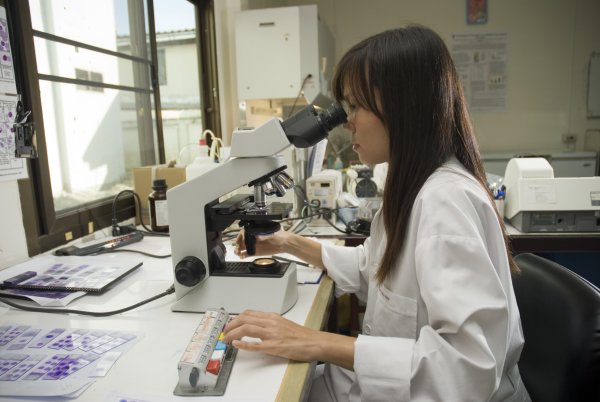Field evaluation of EasyScan GO: a digital malaria microscopy device
Microscopic examination of Giemsa-stained blood films is key to quantifying and detecting malaria parasites but there can be difficulties in ensuring both a high-quality manual reading and inter-reader reliability. The EasyScan GO was developed as a potential solution to this, a microscopy device using machine-learning-based image analysis for automated parasite detection and quantification.

Recent WWARN research published in Malaria Journal details the multi-centre, observational study conducted to assess the performance of the EasyScan GO at 11 sites worldwide during 2018 and 2019. Sensitivity, specificity, accuracy of species detection and parasite density estimation were assessed with expert microscopy as the reference. Intra- and inter-device reliability of the device was also evaluated by comparing results from repeat reads on the same and two different devices.
- 2,250 Giemsa-stained blood films were prepared and read independently by expert microscopists and the EasyScan GO device.
- The diagnostic sensitivity of EasyScan GO was 91.1% and specificity 75.6%, with good-quality slides sensitivity was similar but specificity increased to 85.1%.
- Sensitivity increased with parasitaemia rising from 57% at <200 parasite/µL, to ≥90% at >200–200,000 parasite/µL.
- Species were identified accurately in 93% of Plasmodium falciparum samples and in 92% of Plasmodium vivax samples.
- Parasite density estimates by the EasyScan GO were within ±25% of the microscopic reference counts in 23% of slides.
The EasyScan GO met the WHO-TDR Research Malaria Microscopy competence Level 2 criteria in parasite detection and species identification accuracy; and Level 4 in terms of parasite quantification and false positive rates. All performance parameters were significantly affected by slide quality. Further software improvement is required to improve sensitivity at low parasitaemia and parasite density estimations.
Developing the EasyScan GO
A digital malaria microscopy device operating on thick films only, with both hardware and software developed by Intellectual Ventures' Global Good Fund, was first tested in field settings in Thailand in 2014–2015. A second version was tested at the same site as well as in Indonesia and Peru in 2016–2017.
An improved iteration of the software, with an added thin film module was combined with the EasyScan GO, a production prototype device built by Motic using software also licensed to Motic, and tested on a standard WHO slide set and in an extended trial at London's Hospital for Tropical Diseases.
Read the full paper here.
About WWARN
The WorldWide Antimalarial Research Network (WWARN) generates innovative tools and reliable evidence to inform the malaria community on the factors affecting the efficacy of antimalarial medicines. WWARN works with collaborators to optimise the efficacy of antimalarial medicines and treatment regimens, especially for vulnerable groups including pregnant women, infants and malnourished children, and provides evidence to inform the development of new antimalarial drugs.
WWARN's repository now holds more than 200,000 patients and nearly 680 studies and makes it available for re-use by the research community. This includes clinical, in vitro, molecular and pharmacological data, as well as data on the quality of medicines. Find out more at info@wwarn.org.
